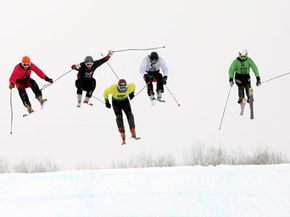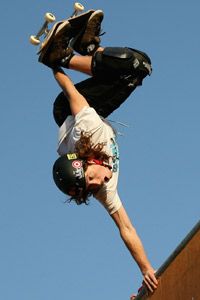There was a time when baseball, football and basketball were top sports with kids. But today's teens were raised on MTV and the Internet, and they don't always have the patience to sit through four quarters or nine innings. They want action. They want speed. They want extreme sports.
By the early 1990s, some Gen X and Y'ers had started tuning out of traditional sporting events and turning their attention to the skate parks and ski slopes instead, where mavericks like Tony Hawk and Shaun Palmer were taking sports to the edge. At the sports cable network ESPN, a programming executive named Ron Semiao took notice of this shift. In 1993, he envisioned a new televised sporting event -- a sort of Olympics on speed. It would feature extreme sports like inline skating, street luge and skateboarding. Athletes would jump, flip and spin, trying to outdo each other with faster and more outrageous tricks.
Advertisement
On June 24, 1995, the first Extreme Games (the name was changed to the X Games the following year) got into action in front of nearly 200,000 spectators in Middletown, R.I. The four-day festival featured 27 events in nine categories, including bungee jumping, eco-challenge, mountain biking and sky surfing. At first, not everyone took the idea seriously. One USA Today columnist wrote, "If you strap your best friend to the hood of a '72 Ford Falcon, drive it over a cliff, juggle three babies and a chain saw on the way down and land safely while performing a handstand, they'll tape it, show it and call it a new sport" [source: Pickert].
It was Semiao who had the last laugh, though. The X Games moved swiftly into the mainstream, generating interest from multimillion-dollar sponsors like Mountain Dew, Saturn and Taco Bell. The extreme sporting event became so popular that ESPN launched the Winter X Games in 1997, adding sports like snowboarding and snowmobiling. By 2002, the X Games had attracted a television audience of almost 63 million people [source: ESPN].
Advertisement



